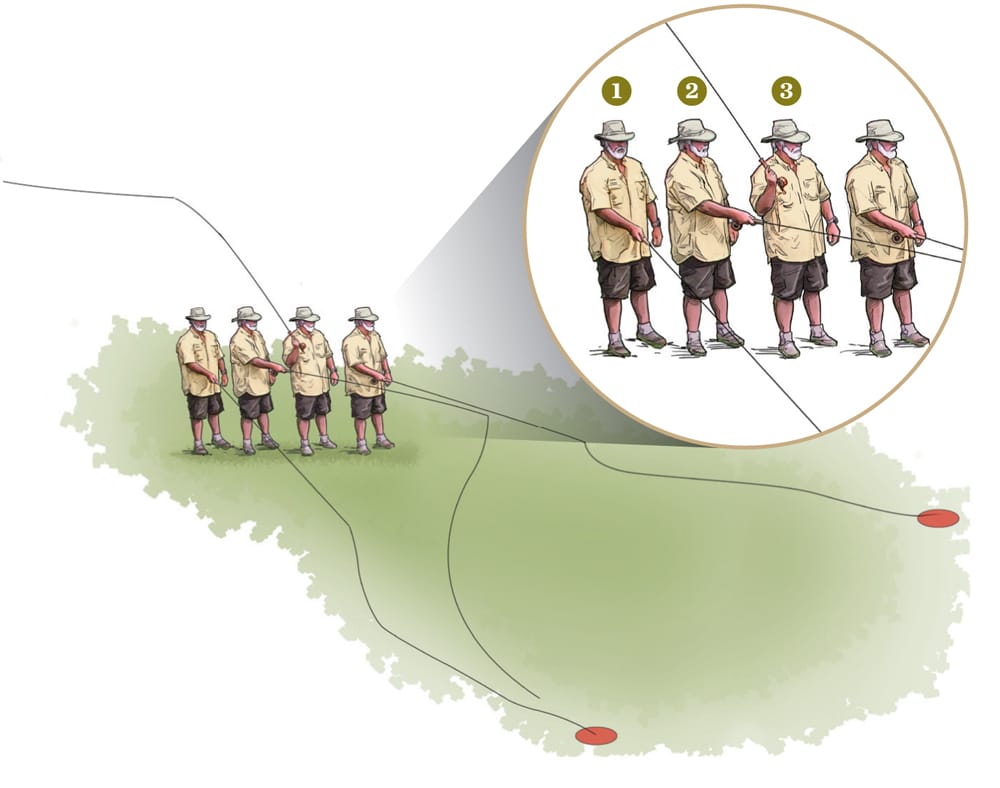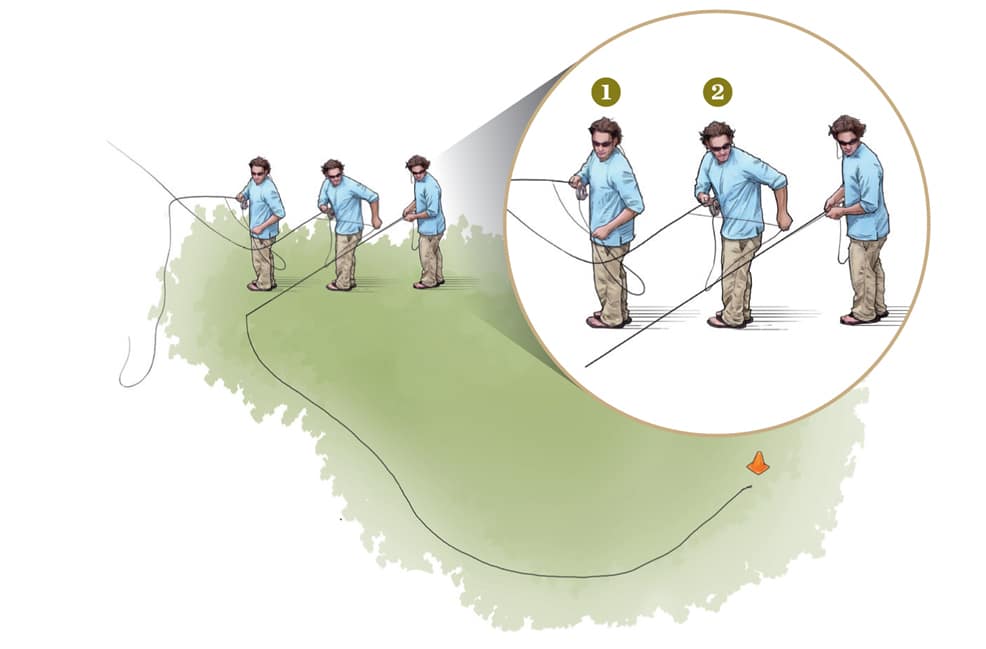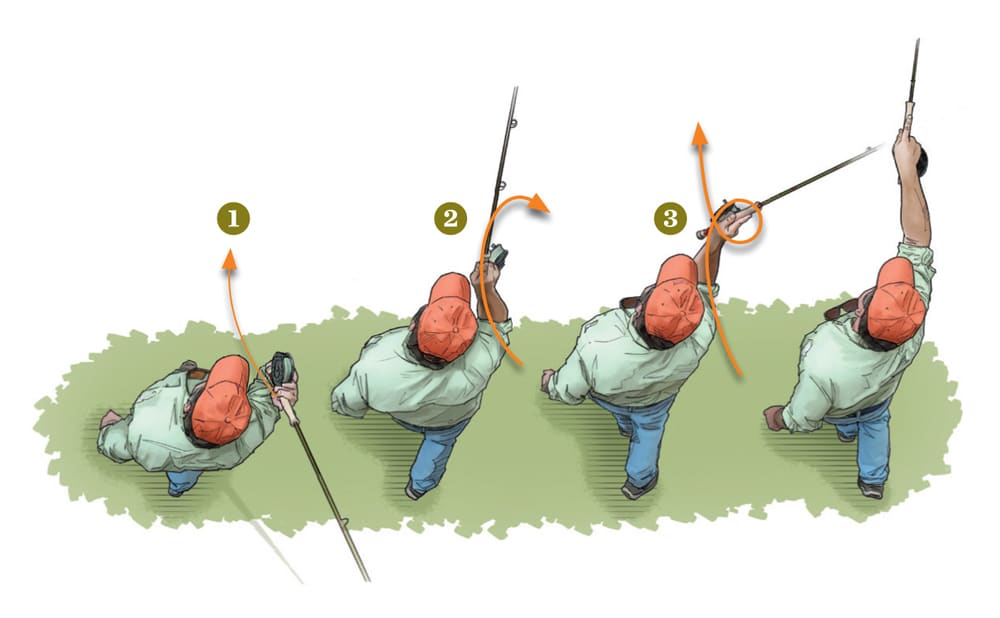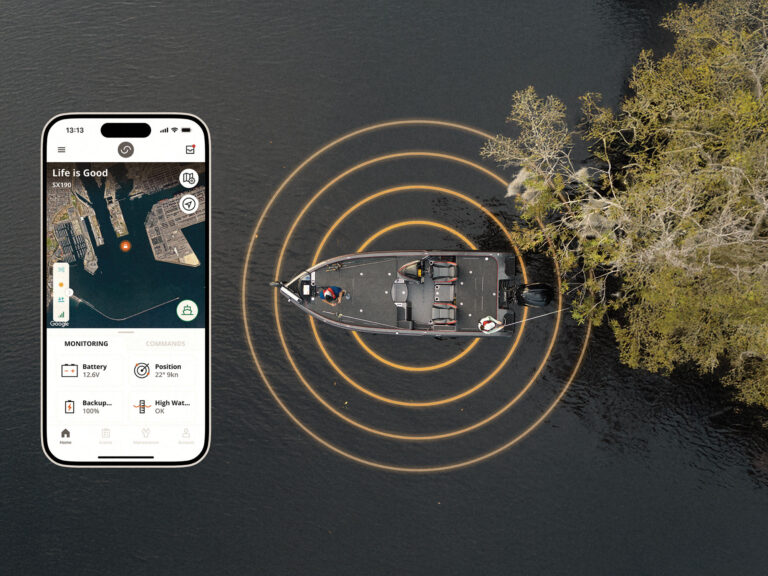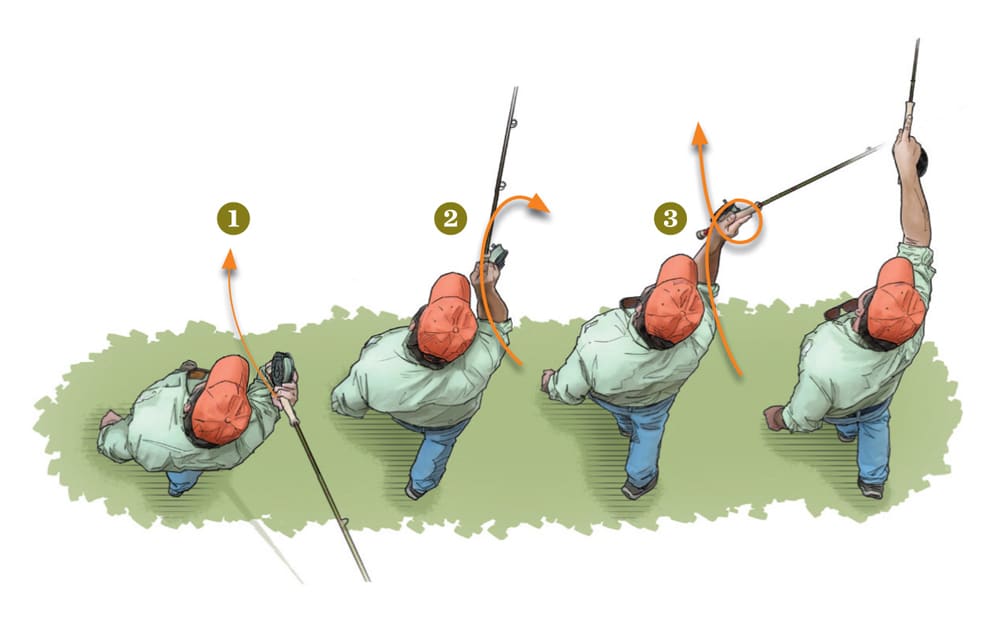
Sky Curve main
Click through the images above to see illustrations and instruction on the Quick-Change Cast, Misdirection Cast and Sky Curve Cast.
The Quick-Change Cast
Born largely out of self-preservation, the quick-change cast is the work of Capt. John Hand, who guides in the Tampa Bay, Florida, area. Many of Hand’s charters involve sight-fishing for redfish. Oftentimes, if the first cast is refused, a forgiving fish will give the fly a second look, provided it is not spooked. The quick-change approach eliminates false casts, keeps the angler engaged and, most importantly, keeps the fly from whizzing about the guide’s head. This delivery works equally well whether the fish is traveling from right to left or vice versa, and is easily made at distances up to 45 feet. You can also add a haul to increase distance. When making this cast the direction opposite what’s shown, the backcast will be made across your body, or, as Capt. Hand says, “just follow the line.” A directional change of up to 45 degrees can be achieved.
The Misdirection Cast
How many times have you been wading and ended up spotting your quarry right in front of you? These are the most difficult fish to catch. Drew Chicone, who spends the majority of his time stalking shallow-water species, has a unique way of making presentations to these sneaky fish. His approach is unorthodox, but it’s deadly when executed properly.
Nearly any movement will send a fish packing when it’s in close range. When casting straight at the fish, if you are lucky enough to present the fly without sounding the alarm, you have a very short stripping window to draw a strike. If your fish is 20 feet away and you are using a 9-foot leader and a 9-foot rod, you will have only two feet of fly line beyond the rod tip. That equals approximately one strip. At this point, the angler typically tries to wiggle, jiggle or otherwise coerce the fly into looking alive without getting the leader inside the rod tip. With Chicone’s method you will now have up to 18 feet (or roughly nine strips) of fly line beyond the rod tip and gain a favorable angle for which to lead your fish. The other critical element of this presentation is that, because your back is turned to the fish, your stripping motion is concealed. Once you make the cast, keep the rod tip low and pointed at the line, not the fly. The line will maintain the circular shape in the water and will provide enough tension to set the hook.
The Sky Curve
Of all the casts, to me, the outside curve is the most interesting and most difficult to wrap my mind around. I have worked to develop this one for a couple of years. Most often what is called an outside curve is actually an aerial mend. By definition, an aerial mend is a motion intended to adjust the line formation after the stop on the forward stroke. The aerial mend is useful for positioning the line in a current or going over the top of an obstacle, but it is not a true curve cast. It will not go around a tree or a bridge piling. Inside curve casts are fairly easy to do. Making a curve to the outside is much more difficult. A cross-body sidearm or backcast approach can achieve an outside curve, but these are cumbersome and accuracy will suffer.
Frequently, a casting instructor’s mantra is “straight-line path of the rod tip,” and don’t get me wrong — that is great advice. However, for the sky curve, we must break the rules. This cast is an overhead stroke that features an elongated single spiral path of the rod tip during the forward stroke. Make sure that you make only one rotation; if you continue in a corkscrew motion, your line will end up in a heap of coils. With the sky curve you can effectively make casts with up to 60 feet of line and achieve a sharp curve (see image below). Once the fly lands, usually out of your line of sight, keep the rod pointed at the line and the curved shape will hold during the retrieve.

This cast works in either direction but solves a particular problem when curving accurately to the outside. The sky curve is one of the rare instances in fly-casting when a weighted fly can enhance the cast.
These casts may seem strange and difficult at first, but with some dedicated practice they likely will help you catch a few fish that you otherwise wouldn’t have.
